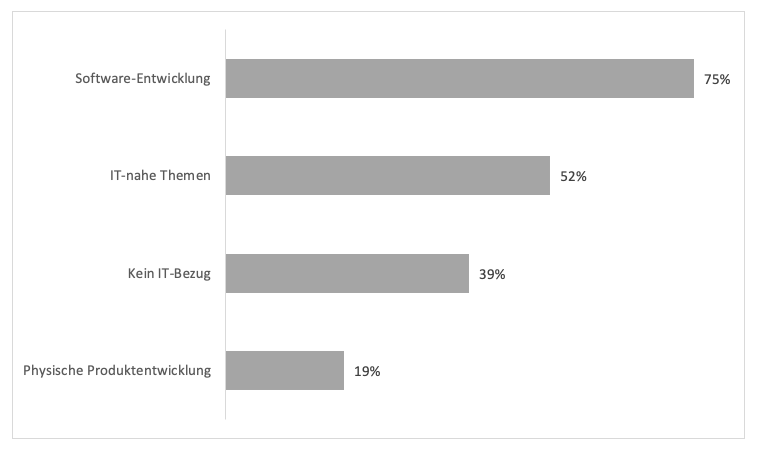Agility is the ability of the information function of a company to make preparations in order to react very quickly to changing capacity requirements and changed functional requirements, if possible in real time, and to be able to use the possibilities of information technology in such a way that the technical scope of the company is expanded or even redesigned can be ( source ).
In the course of my research, I analyzed two studies, which I would like to explain in this article, to show the current state of agility.
Study 1: Status Quo Agile Methods
The first study was carried out by Komus (2020). With the help of an online survey, over 600 specialists were asked about the current use and importance of agile methods. The survey shows that the vast majority of the respondents’ projects are currently organized in a mixed manner, i.e. contain agile and classic elements. According to the participants, the proportion of consistently agile projects is 20%. In addition, the majority of the projects focus on software development and IT-related topics (see Figure X). According to the study, almost 90% of the specified consistently agile projects can be found in the IT area. Reasons for using hybrid approaches are often internal framework conditions or the difficult implementation of agile methods.
According to the study participants, the main reasons for using agile methods are:
- Optimization of the product development speed (56%),
- Optimization of the product development quality (39%),
- Reduction of risks (38%) and
- Optimization of employee satisfaction (35%).

In the study, 85% of the participants stated that the continuous or partial use of agile methods led to an improvement in a certain form. Only 15% did not experience any change. At the same time, 70% of the participants surveyed confirm that the effort was significantly higher than expected. The main agile methods used are:
- Scrum (55%),
- Kanban (25%),
- DevOps (20%) and
- Design Thinking (15%).
As mentioned, agile methods are increasingly being used with classic approaches. According to the participants, the most important elements adopted by the agile methods are:
- Spring Planning (82%),
- Daily Scrum (82%),
- User stories (80%),
- Product backlogs (80%),
- Sprint Review (78%),
- Sprint retrospective (77%),
- Kanban boards (77%).
A last essential point are frameworks with the help of which agility is to be scaled through the combination of methods in the company. More than two thirds of the respondents reject these frameworks. The reasons for this are that the focus is currently on establishing at team level or that there is insufficient knowledge of how to use the framework in the company. The most important frameworks mentioned by the other participants are:
- Scaled Agile Framework (54%),
- In-house development (35%),
- Large Scaled Agile (23%),
- Spotify model (16%),
- Nexus (15%).
Study 2: Perceived Agility
Together with the University of St. Gallen, the consulting company Campana und Schott conducted interviews with over 500 executives on the subject of agility across all industries in 2019. The focus should be on the managers’ assessment of the agility of their own company.

According to the figure, almost three thirds of the participants noticed an increase in the agility of the company. The increases relate to the following areas:
- Speed of task completion (90%),
- Employee satisfaction (81%),
- Business performance (79%) and
- Team orientation (74%).
Conclusion
In conclusion, it can be said that agile methods have become an important part of companies and have shown significant improvements in some areas. It was particularly evident that the key to success is not using the entire method, but rather individual agile best practices. The following applies: Constructive agility in parts of the company increases the perceived agility.
swell
Campana bulkhead. (2019). Future Organization Report 2019. Retrieved May 20, 2020, from https://www.campana-schott.com/de/de/unternehmen/media-events/studien/future-organization-report
Komus, A. (2020). Result report: Status Quo Scaled Agile 2019/20. Retrieved May 20, 2020, from https://www.process-and-project.net/studien/studienunterseiten/status-quo-scaled-agile-2020/
[werbung] [fotolia]


